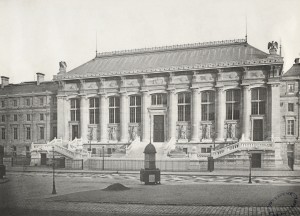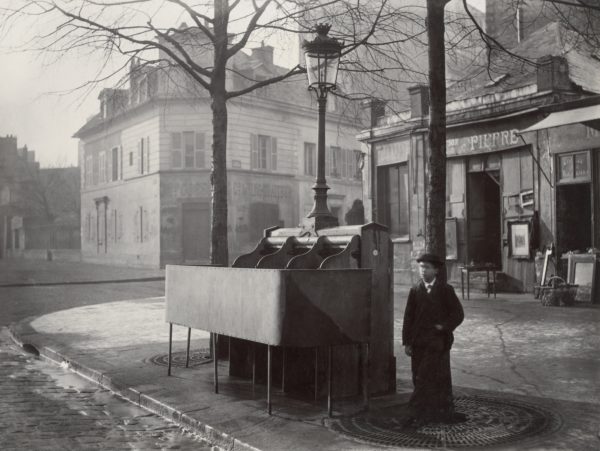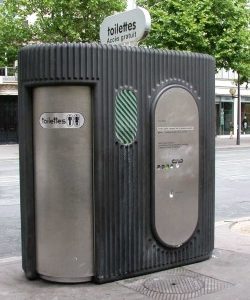You may recall reading our blog The Pee Ladies of Paris (November 7, 2015). Well, I’m going to take you on another journey into the history of public urination in Paris. Our discussion could easily take place in London or any major European city (e.g., Berlin, Stockholm, or Lisbon).
During the Middle Ages, there were no toilets (unless you were the king and queen or of high nobility), no sewer systems (other than the river and city streets), and no way to relieve oneself in public unless you were female and had your ladies-in-waiting form a circle around you to shield your actions. For the men, it was much easier. They just urinated in public—seemingly no shame in this other than the smell.
Public Urination
Public urination was banned in Paris by the 1700s. For convenience purposes, “barrels of easement” were placed on the street corners. Unfortunately, the problems—public views and the stench—were not solved.

Napoléon III had enough of this by the mid-1850s and he ordered Baron Haussmann to create a device for men to urinate in but out of public sight. These became known as Pissoirs or Vespasiennes: structures to support and screen the urinals (and men) in public space. The name Vespasienne was given to the urinals in honor of the Roman Emperor Vespasianus who installed the first public toilet system in Rome.

Haussmann did not have to go far to meet the emperor’s expectation. About sixteen years earlier, Claude-Philibert Barthelot, comte de Rambuteau designed a green steel public urinal with ornamental columns and a screen that encircled the core. Although it did not provide total privacy—only the man’s torso was covered—it did result in a cleaner city and reduced the stench. England imported the urinal where it became known as the “Superloo.”

By 1914, Paris had more than 4,000 public urinals of the de Rambuteau design. For various reasons the number began to decline with only 1,200 in existence by the 1930s. It is said that during World War II, French Resistance members would meet in the urinals because of the “privacy.” The 1960s saw the green urinals phased out and replaced with public pay toilets. By 1980, freestanding public toilets or Sanisette (unisex and self-cleaning) became the norm.

Only one of the original Vespasiennes still exists in Paris. It is located on the Boulevard Arago, just west of the intersection with Rue de la Santé. Despite the graffiti, peeling paint, and its age, the classical design work can still be seen. The neighborhood takes great pride in their green steel public urinal.
The Hole In The Ground
Several years ago, Sandy and I were with our adult children in Deauville waiting for the train to Paris when our daughter announced she had to go to the bathroom. There was one women’s bathroom in the train station. After several minutes, she came out horrified. The bathroom facilities consisted of a hole in the ground. So you can see that things really have improved since the Middle Ages.
Other Water Works
Other Paris water works from the 19th century include the Wallace Fountains. Please visit my previous blog, Wallace Fountains, for a history of these ornate water fountains.
Someone Is Reading Our Blogs
I’d like to thank Dr. Prem Williams for her e-mail and kind comments concerning our last blog (A City of Light). Prem lived in Paris and was “immersed in the Age of Reason … and intellectual life of the enlightened world.”
What’s New With Sandy and Stew?
We have a lot of stories and we’re looking forward to sharing these with you. Please continue to visit our blog site and perhaps you’d like to subscribe so that you don’t miss out on our blog posts, past and current.
Share This:
Follow Stew:
Find Stew’s books on Amazon and iBooks.
Please note that we do not and will not take compensation from individuals or companies mentioned or promoted in the blogs.
Walks Through History
Copyright © 2016
